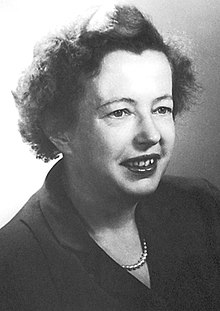Well, it’s been quite a while since I’ve made a post on our awesome women in science. But I’ll be catching up shortly!
The science woman for August is Maria Mayer (1906- 1972). Maria was a German physicist, though she moved to the United States when she was 23. Though she was a promising physicist and dedicated to her work, she found it difficult to find a position at a University. Antinepotism rules kept her from getting a job at the same institution as her husband. Instead, she continued to do her work without pay in a university attic for nine years – managing to publish 10 papers and coauthor a physics textbook with her husband in that time.

When she was finally paid for her research, the government foot the bill while she worked on projects during Wold War II. In particular, she oversaw a team of chemists working on projects related to enriching uranium. This then lead her to accept an appointment in nuclear physics at Argonne National Laboratory. Here she tackled the problem of why some isotopes are more stable than others. At this point, scientists weren’t sure what was inside a nucleus – just that it might be configured in some kind of onion-like shells. Maria was determined to figure out the source for these shells. Eventually, after collaboration with Enrico Fermi (an Italian-American who created the first nuclear reactor) she made the discovery of spin-orbit coupling. Some isotopes were more stable than others because the neutrons and protons were in a lower energy state by coupling their spins.
Maria was determined to follow her passions, finding ways to perform research and learn more about the world around her despite whether or not her contributions were recognized or compensated for.

Did she work without pay for 9 years, or just worked in an attic for 9 years? She truly was a dedicated scientist.
Thanks for sharing
I just have to wonder how much further along we would be, what additional amazing discoveries we would have had, if there hadn’t been so many obstacles to women in science over the years. I’m very grateful for those who were dedicated and willing to face and overcome the obstacles in their way! Thanks for sharing this info on Maria Mayer!
I always enjoy reading about someone that is able to persue their passions recognition or compensation. It think it’s very unfortunate that so many women in science fall into that category, but I’m grateful for the contributions they made despite the drawbacks. And to you for bringing the stories of such great women to our attention!